OSHKOSH GENIUS: An Analysis of How Lewis Hine’s Upbringing in Oshkosh and Chicago Experience Shaped His Views and His Photography
By Stephen Heins
OSHKOSH GENIUS: An Analysis of How Lewis Hine’s Upbringing in Oshkosh and Chicago Experience Shaped His Views and His Photography
By Stephen Heins
Lewis Hine’s views on men and women at work, as reflected in his photographic work like Men at Work (1932) and his child labor investigations, were profoundly shaped by his upbringing in Oshkosh, Wisconsin, and his academic experience at the University of Chicago (1900–1901). His background instilled a deep respect for labor, a commitment to social reform, and an empathetic lens toward workers’ contributions and struggles, regardless of gender. Below is an analysis of how these formative periods influenced his perspective on labor and economic development.
Upbringing in Oshkosh, Wisconsin
Hine was born in 1874 in Oshkosh, a small industrial city with a strong working-class ethos, rooted in lumber, manufacturing, and trade. His early life in this environment shaped his understanding of labor’s dignity and challenges, particularly for both men and women.
Working-Class Roots and Labor Exposure:
• Family Context: Hine’s father died when he was 18, forcing him to work to support his family. He took jobs as a factory worker, janitor, and bank clerk in Oshkosh, experiencing firsthand the physical demands and economic pressures of manual labor. This likely fostered his empathy for workers, male and female, who toiled in similar conditions.
• Oshkosh’s Industrial Economy: Oshkosh was a hub for lumber mills and factories, employing men in heavy industry and women in roles like sewing or domestic work. Hine would have observed the gendered division of labor—men in sawmills or construction, women in textile or service roles—shaping his later focus on documenting both groups’ contributions.
• Community Values: The Midwest’s emphasis on hard work and community solidarity likely instilled in Hine a belief in labor as a cornerstone of economic and social progress. His later photographs dignify workers, reflecting this early respect.
Social Awareness and Reform:
• Local Inequities: Oshkosh’s industrial growth brought wealth but also exploitation, including child labor in factories. Hine’s exposure to these conditions may have sparked his lifelong commitment to humanity, evident in his advocacy of human values..
• Gender Dynamics: Women in Oshkosh often worked in low-paying, labor-intensive jobs or as homemakers supporting industrial households. Hine’s awareness of their economic contributions, often undervalued, likely influenced his efforts to document women’s labor in factories and tenements.
Self-Education and Ambition:
• Hine was largely self-educated before pursuing formal studies, working evenings to attend school. This instilled a belief in education as a path to empowerment, which he later applied to his photography, using it to educate the public about Americans lives. His own struggles as a young worker may have made him particularly sensitive to the plight of women and children in exploitative labor conditions.
University of Chicago Experience (1900–1901):
Hine’s time at the University of Chicago, where he studied sociology and education, was pivotal in refining his views on labor, economic development, and social reform. The university’s progressive intellectual environment, coupled with its interdisciplinary focus, provided theoretical frameworks that shaped his approach to documenting men and women at work.
Influence of Sociology and Social Reform:
• Albion Small and Sociology: The University of Chicago housed the first sociology department in the U.S., led by Albion Small. Hine’s studies under this department emphasized empirical research and social improvement, encouraging him to view labor issues through a sociological lens. This likely informed his methodical approach to photographing child labor, using images as data to advocate for change.
• John Dewey’s Influence: Hine studied with John Dewey, a philosopher and educational reformer who emphasized experiential learning and social progress. Dewey’s belief in education as a tool for democracy resonated with Hine, who later used photography to educate the public about labor conditions, particularly for women and children.
• Progressive Era Context: Chicago was a center of Progressive Era reform, addressing issues like child labor and workplace safety. Hine’s exposure to these movements reinforced his commitment to documenting workers’ struggles, ensuring both men’s and women’s contributions were visible.
2. Economic Thought and Labor:
• Thorstein Veblen’s Critiques: Although Hine did not study directly with economists, the Economics Department, led by figures like Thorstein Veblen, was influential. Veblen’s The Theory of the Leisure Class (1899) critiqued industrial capitalism’s exploitation of labor and its gendered implications (e.g., women as status symbols). Hine’s focus on dignified, yet exploited, workers—men in construction, women in mills—echoes Veblen’s appreciation of labor’s role in economic systems.
• James Laurence Laughlin: Laughlin, head of economics, advocated classical economic principles but also engaged with labor issues. His presence in the intellectual milieu may have indirectly shaped Hine’s understanding of labor markets, though Hine’s sociological lens prioritized human impact over economic theory.
• Interdisciplinary Exposure: Chicago’s social sciences were interconnected, and Hine likely encountered economic discussions about industrialization’s benefits and costs. This balanced his view: he respected labor’s role in economic development (e.g., skyscraper construction) but criticized its human toll (e.g., child labor).
3. Gender and Labor Perspectives:
• Women’s Labor: Chicago’s sociologists studied urban labor, including women’s roles in factories and tenements. Hine’s later work, such as images of women in textile mills or doing piecework at home, reflects this focus, highlighting women’s economic contributions and vulnerabilities.
• Empathy for Marginalized Groups: The university’s emphasis on social reform attuned Hine to the plight of marginalized workers, including women and immigrants. His photographs of female factory workers and male laborers at Ellis Island show a consistent effort to humanize all people, regardless of gender.
4. Photography as a Tool:
• Hine began exploring photography during or shortly after his Chicago years, influenced by the idea of using visual evidence for social change. The university’s empirical approach likely encouraged him to see photography as a sociological tool, enabling him to document men, women and children at work with realistic, artistic and reformist intent.
Synthesis: Shaping Hine’s Views on Men and Women at Work
Hine’s Oshkosh upbringing and Chicago education converged to form a nuanced perspective on labor, blending admiration for workers’ contributions with a clear eyed vision of their lives:
• Dignity of Labor: From Oshkosh, Hine likely inherited a respect for the working class, evident in his heroic depictions of men in Men at Work (e.g., Empire State Building workers) and his sensitive portrayals of women in mills and factories. He saw both as vital to economic progress, reflecting his early exposure to industrial labor.
• Social Reform: Chicago’s progressive environment, particularly through Dewey and sociology, gave Hine the tools to advocate for change. His photographs of women and children in exploitative conditions (e.g., National Child Labor Committee work) were direct calls for labor reforms, rooted in his academic training.
• Gender Inclusivity: While Men at Work emphasizes male laborers, Hine’s broader portfolio shows equal attention to women’s labor, likely influenced by Oshkosh’s visible female workforce and Chicago’s studies of urban labor. He recognized women’s economic roles, from factory work to tenement homework, as integral to industrial growth.
• Economic Development: Both periods shaped Hine’s view of labor as the backbone of economic development. Oshkosh showed him the human effort behind industry, while Chicago provided theoretical insights into capitalism’s benefits and flaws, reflected in his balanced portrayal of progress (skyscrapers) and exploitation (sweatshops).
Evidence in Hine’s Work
• Men at Work (1932): Images of male construction workers reflect his Oshkosh-rooted admiration for physical labor and Chicago-inspired appreciation for industrial progress, tempered by awareness of workplace risks.
• Child Labor Photographs (1908–1918): Hine’s focus on young women and boys in factories shows his reformist zeal, shaped by Chicago’s social activism and his own working-class struggles in Oshkosh.
• Pittsburgh Survey (1907–1908): This project, documenting men and women in steel mills and tenements, combines his sociological training with his early exposure to industrial communities, highlighting labor’s diversity and challenges.
Conclusion
Hine’s upbringing in Oshkosh grounded him in the realities of working-class life, fostering empathy for men and women laborers and respect for their economic contributions. His University of Chicago experience provided a theoretical and reformist framework, enabling him to articulate these views through photography.
Together, these influences shaped Hine’s dual commitment to celebrating American life, labor, and immigration’s role in economic development and advocating for fair treatment, ensuring both men and women at work were seen, respected, and humanized in his “photo stories.”.

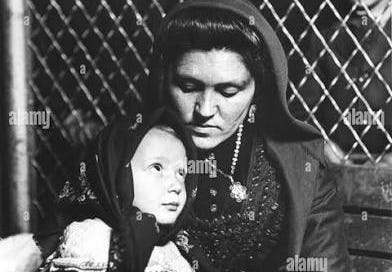


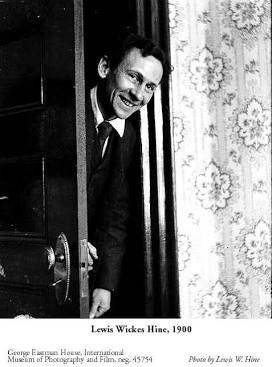

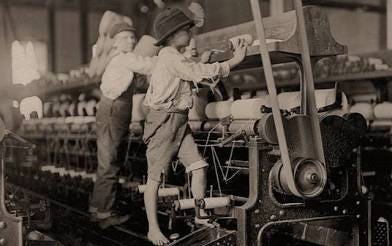
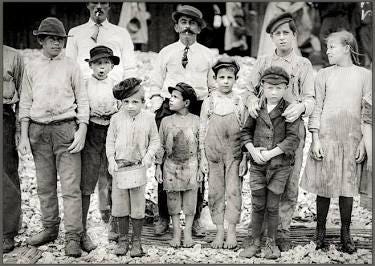
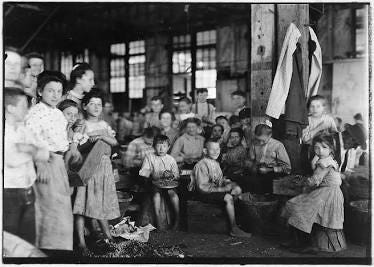
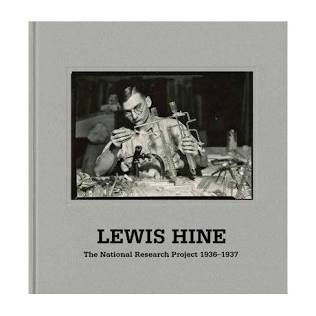
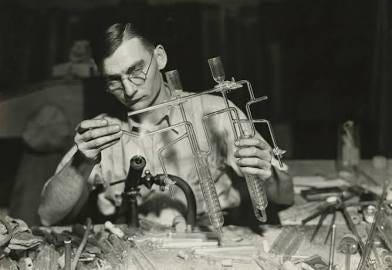
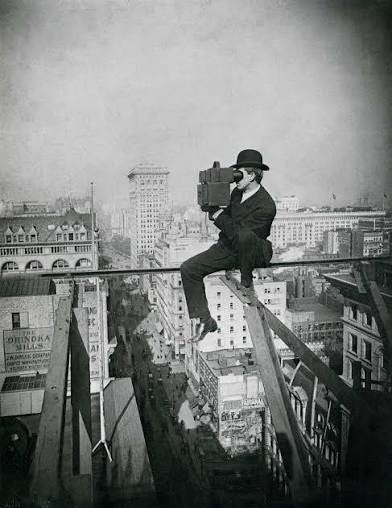
An Outstanding Dissertation..!!